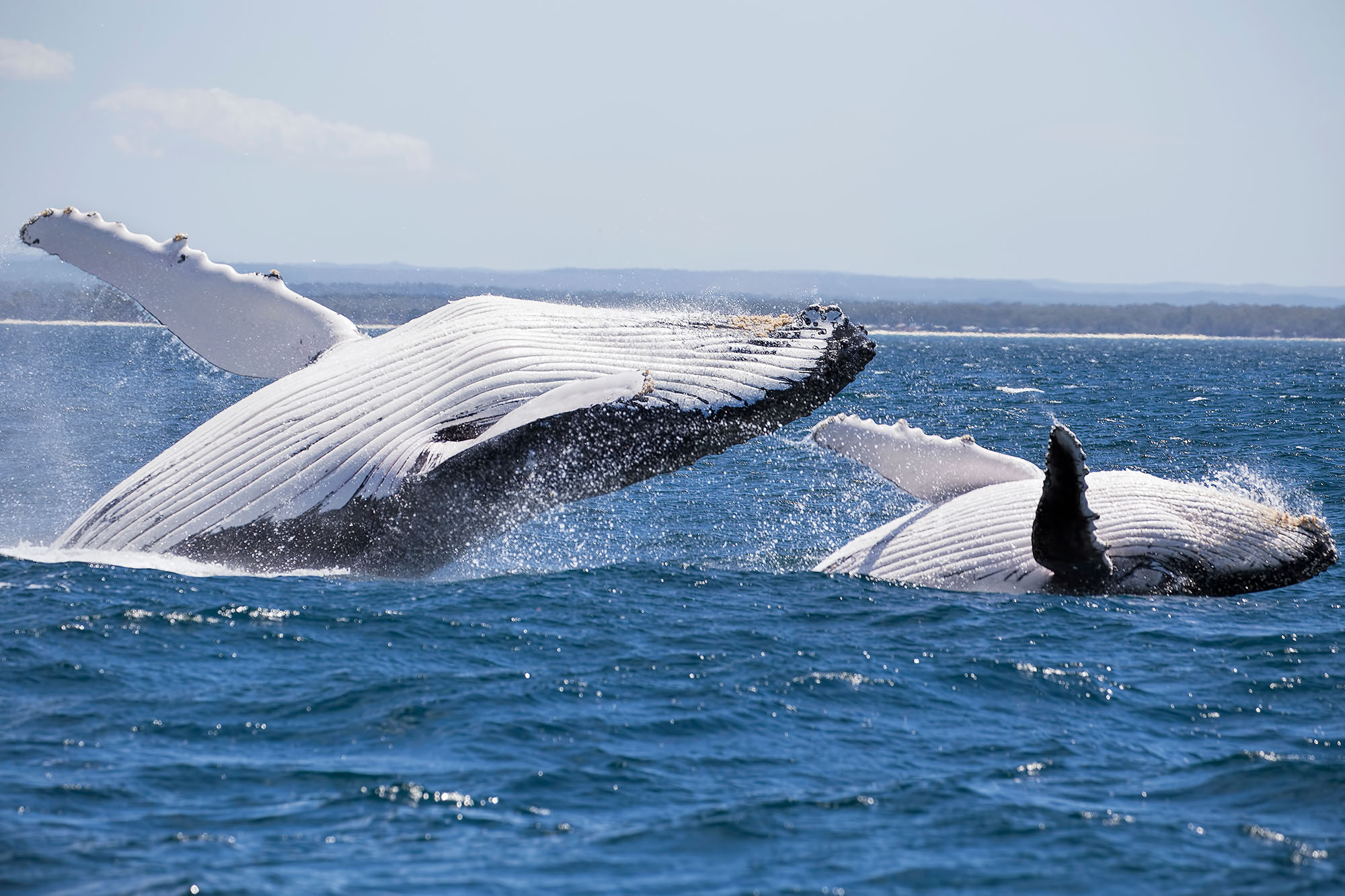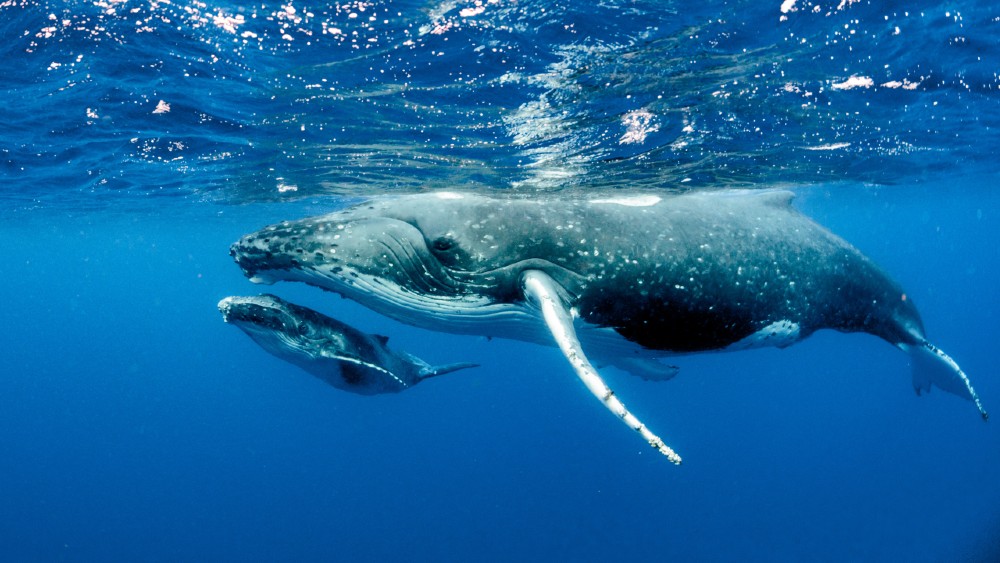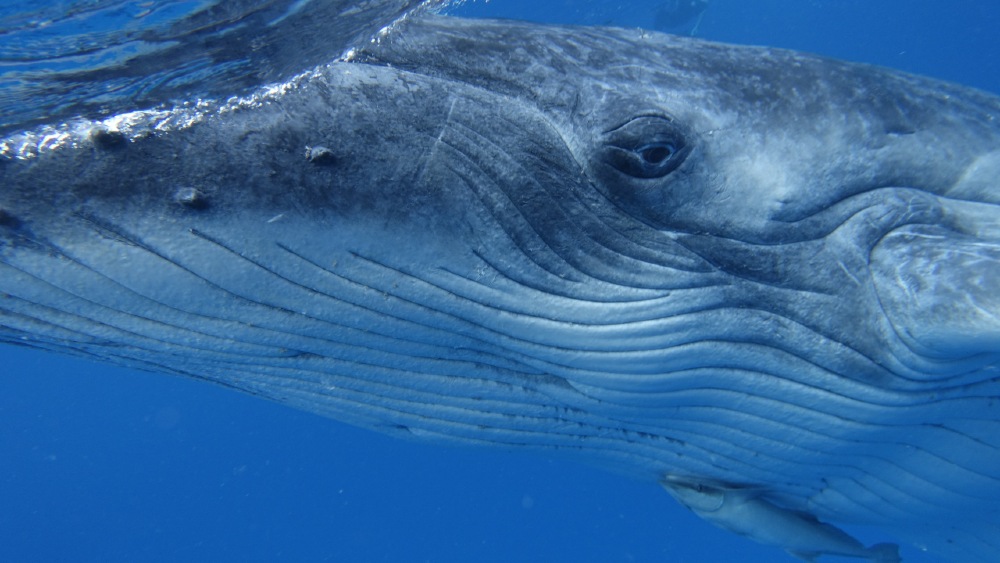Spotted: on a Jervis Bay whale watching cruise, a large humpback whale jumping and splashing in the turquoise seas. Jumping is also known as breaching, and is a regular part of the whale’s repertoire, in addition to blowing water, slapping fins, and rolling. This adorable activity brings a smile to our faces, but is there a story behind the manoeuvre? Do whales jump simply to have fun? Or is there are a larger significance to the humpback’s signature move? Why do whales jump?
The Mysterious Humpback
Few marine creatures are more fascinating than the humpback whale—the number of guests on our Jervis Bay whale watching tours attests to that! But scientists have spent decades studying the mighty ocean mammal and have only begun to scratch the surface of understanding their behaviour. These 12-16m sea beasts have incredible annual migrations—some of the world’s longest. They also have magical songs that they use for a variety of purposes (most of them still fairly mysterious). Human’s fascination with whales earned them a rightful place in stories and legends. And still, we aren’t fully sure why they jump and breach in the water. Here are some theories:
Communicating–Loudly!
Humpback whales clearly communicate with one another, as seen in their array of sounds and songs. When whales breach, they propel themselves up and out of the water, inclining their bodies horizontally as they return to the water. This emits a huge splash and a sound which reverberates significantly—particularly under water where sound travels so quickly. For this reason, some researchers suspect that breaching sends messages to other whales. It may be used as a locator beacon, letting other whales know where to find them. It could be a signal to a young humpback to come back to Mum if he or she has swum too far. Or it could potentially let other whales know that a predator is approaching.
Freshening Up
Scientists theorise that much of whale behaviour could be for a very clear reason: cleaning themselves. Whales must regularly remove barnacles, debris, parasites, and even smaller fish hitching a ride on their lengthy bodies. With its sharp slap against the water, it’s quite possible that the breaching motion does exactly this for the whale. Fin slapping and rolling in the waves could have the same effect. Perhaps the humpback prioritises his hygiene as much as you and me! Other sea species are known to breach as well, lending credence to this “freshening up” theory.
It has also been suggested that breaching and other whale activity are performed in order to help the digestion process. This could explain why you occasionally spot a mother and baby humpback breaching side by side. Perhaps Mum is teaching her calf how to properly digest her latest meal.
Making a Statement
Still another idea as to why whales jump is to simply make a statement. Some research shows that more breaching occurs during mating season than during feeding season. As whales search for a sexual partner, the act of jumping could be a peculiar display designed to impress and attract. That would not be surprising, considering the thunderous splash the breach creates. On a whale watch excursion in Jervis Bay, seeing such a jump inspires awe and cheers—and sets off a flurry of camera flashes.
And, despite all of these theories, it is possible that the might whale breaches merely for the pure joy of it.
Want to check out the amazing breaching action of the humpback whale for yourself? We’d love you to join us on one of our Jervis Bay whale watching cruises, where the whales show off their skills regularly. Whale watching season has only a few months to go, so book in today for an unforgettable tour.





